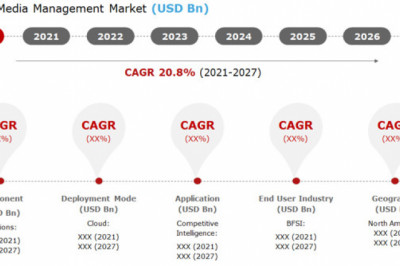views

Today’s business environment is more competitive than ever. It’s not enough anymore to just have an outside banner or send a daily newsletter. The audience is sick with similar advertisements and calls to action. Nowadays marketing requires a far more creative and diplomatic approach, and that is why personalization is a must-have for well-built marketing.
Personalization is the process of tailoring the content for various segments of the target audience. It’s based on the available data that customers allow analytics services to collect, such as:
- Gender
- Age
- Location
- Time
- Visitor frequency
- Device
- Session behavior
Tailored content will become a huge competitive advantage to all your marketing channels and build brand awareness. But what exactly does it do for your brand’s goodwill? And how does Contentful address that challenge?
Why personalization is important
There are several reasons for a business to create personalized content:
You will get closer to your customers
Your existing and potential customers come to your website for different reasons. Some customers come to you for the first time to look through your catalog of goods or services, some of them return to buy a particular item, some want to compare your offerings to your competitors. Besides, all customers have their own traits that can influence their buying decisions, like age or location.
Here is the problem: a lot of websites and landing pages show the same content to all of the customers. They don’t take into account where potential customers come from or what they want from the business right now. Since all visitors see the same content, it’s inevitable that it will be fitting for some while others find it useless.
Content personalization addresses the issue of multiple segments in the target audience. Depending on all the characteristics mentioned above, the website will display the most relevant information that will cater to their individual needs.
Emotional attachment makes a point here. Personal interaction is something that brands use extremely actively today, and it helps them build stronger and more engaging relationships with their customers. People like to buy from companies that know their name, purchase history, and as a result, deliver useful content. For a seamless integration of personalized content, you need a way to add and manage user information to share the relevant information and experience at the right time with the right audience segment.
You will build your brand voice
You will also want to provide your company with personal information to provide a unique marketing experience. This includes the personal aspect of your work.
The email services have an automated solution for asking authors to send responses. In particular, check the suitability of the company in the picture, followed by the names of your employees and the employees themselves. This lets the customer know that they’re interacting with a real company, not just automated bots.
Today, many companies combine company names with department heads to provide customers with a friendly experience.
You will encourage sales
This benefit stems directly from the previous two. The customers will appreciate personalized recommendations and guidelines. That will help your customers understand that you are ready to solve their pain points and truly care about their needs, which will result in higher brand loyalty and increasing profit.
Is “insert a name” enough?
Well, no, it’s not. Simple name changing in a pre-made template hardly works in today’s environment. In addition to this, an extremely useful personalization tool that you can use is web personalization.
An important note: don’t confuse web personalization with dynamic content personalization. Dynamic content is about data-driven segmentation of the target audience and displaying the relevant content to the appropriate segments. That applies to personalized emails or ads: you just show customers something that they would like according to gender, location, or age.
We can face a problem at this stage: if a person clicks on a relevant advertisement but lands on a static web page with one-for-all content, they may become disappointed, and you will miss an opportunity to get a loyal client.
Read more: https://yellow.systems/blog/contentful-and-content-personalization












